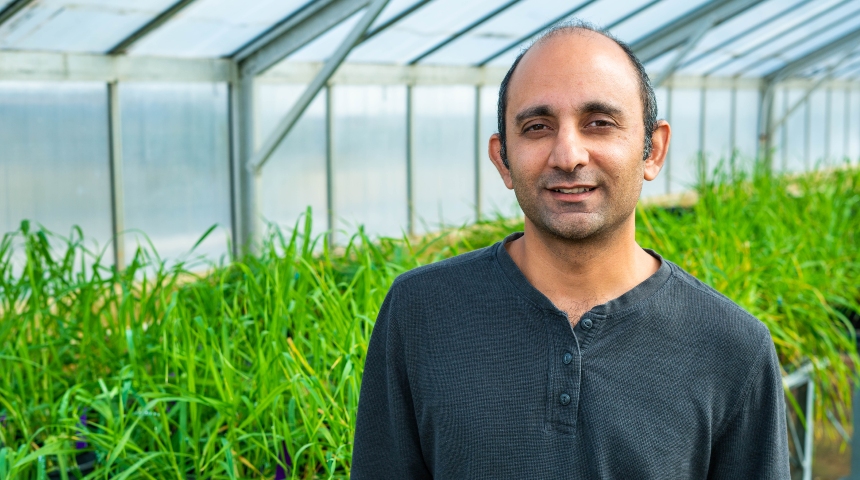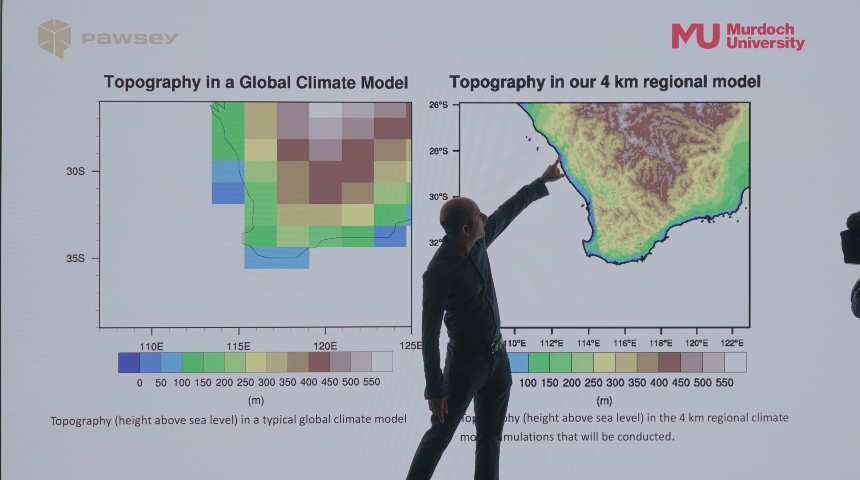
A state-of-the-art regional climate modelling project will deliver more detailed and reliable projections for local areas across Western Australia.
The projections will be used to inform planning for infrastructure and climate-sensitive sectors such as agriculture and conservation.
“Global climate models help us to simulate very large-scale weather patterns across the globe, but they are not suitable for regional applications,” Dr Jatin Kala, Senior Lecturer in Atmospheric Science at Murdoch University, said.
“Our new high resolution regional projections will provide regionally specific information so that we can project, for example, the climate for Bunbury as distinct from that of Perth.
The application of this new knowledge will have a broad range of applications, from climate-proofing agriculture and critical infrastructure to biodiversity conservation.
Dr Kala is leading the scientific team that will work closely with the Pawsey Supercomputing Research Centre to create Western Australia’s most comprehensive climate change projections.
Using Pawsey’s powerful new supercomputer Setonix, researchers will combine the long-term predictive power of global climate models with the resolution of regional models.
The Honourable Reece Whitby, Minister for Environment and Climate Action, said the project was a big step for climate change preparedness in Western Australia.
“The supercomputer's capabilities are extraordinary. It's a significant acknowledgement of our State and the nation's investment to take action against climate change,” he said.
“These projections will provide the best information possible to shape our decisions.”
The project is part of the Climate Science Initiative (CSI) being led by the Department of Water and Environmental Regulation (DWER) in partnership with the New South Wales Government and Murdoch University through the NSW Department of Planning and Environment’s New South Wales and Australian Regional Climate Modelling Project (NARCliM 2.0) and the Pawsey Supercomputing Research Centre.
 Image caption: Dr Kala outlines the radically improved resolution of climate projections the project will provide.
Image caption: Dr Kala outlines the radically improved resolution of climate projections the project will provide.
Dr Kala said these valuable local climate insights will support preparedness for increased temperatures, storm events and other climate-associated hazards, delivering predictions up to the year 2100.
“Modelling like this goes beyond just understanding weather patterns. For example, this information will allow winemakers in Margaret River to see what the next 50 to 100 years might look like for their industry in terms of a changing climate,” Dr Kala said.
This knowledge really will impact us all.
Pawsey’s Executive Director, Mark Stickells, said this project emphasised Pawsey’s commitment to supporting transformative research, and showcasing the potential applications for industries throughout Australia and beyond.
“We are really proud to support this strategic partnership, as we can see the huge impact these climate change projections will have on our state,” he said.
“Dr Kala and his team have been working with Pawsey in this space for many years, and to see the research progressing to such an impressive scale is a testament to what our experts are capable of when they have access to the tools they need.
“The power of our new supercomputer Setonix - recently recognised as one of the world’s greenest supercomputers - gets Pawsey in a unique position to help develop these climate models that support WA.”
This project will be one of the largest allocations for Setonix so far, with 40 million core hours available, alongside 1.5 petabytes of storage through Pawsey’s high-speed data storage system, Acacia.
“Each simulation will include two future climate scenarios with two different modelling configurations, which is modelling on a scale that we have never attempted before,” he said.
The project will also support two PhD scholarships and provide practical experience for graduate students in climate science.
The first projections are expected to be available to climate scientists in 2024. They will then be analysed and processed for use by a broader audience.
For more information on CSI, please visit wa.gov.au/climatescienceinitiative
This research supports United Nations Sustainable Development Goal 13, to take urgent action to combat climate change and its impacts.